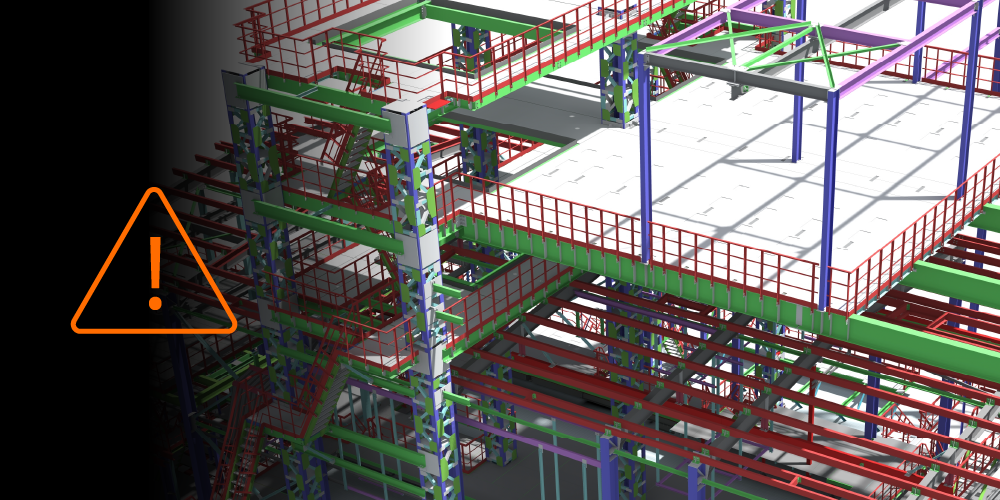Related Articles
— 16 min read
Construction Invoicing Explained: Managing Certification, Compliance, and Cash Flow

Last Updated Oct 30, 2025

Josh Krissansen
47 articles
Josh Krissansen is a freelance writer with two years of experience contributing to Procore's educational library. He specialises in transforming complex construction concepts into clear, actionable insights for professionals in the industry.
Last Updated Oct 30, 2025

Few functions expose the commercial pressure inside Australian construction projects quite like invoicing. Behind every payment claim sits a chain of certification, documentation, and statutory compliance that determines whether cash moves on time — or whether it stalls, triggering disputes, delayed works, and reputational damage.
In large contracting environments, construction invoicing is more than an administrative step. It’s a control mechanism linking financial performance, project governance, and Security of Payment (SOPA) compliance. The difference between efficient and ineffective systems often comes down to how well executives integrate contractual, operational, and financial data across teams.
This article examines the realities of construction invoicing in Australia: how it functions under SOPA, the documentation standards that keep claims compliant, and the billing models that most directly influence cash flow and commercial stability.
Table of contents
Construction Invoicing Explained
Construction invoicing in Australia typically takes the form of progress claims, which are structured payment requests based on completed work, materials supplied, and approved variations.
Each claim must align with the project’s Schedule of Values (SOV) or Bill of Quantities (BOQ) to ensure claimed amounts accurately reflect measurable progress.
Claims generally include line items for instances such as:
- Equipment hire
- Subcontractor costs
- Approved variations
- Labour
- Materials
Supporting evidence verifies that the work has been completed and confirms the claim’s accuracy, and includes:
- Delivery dockets
- Receipts
- Site photographs
How Construction Invoicing Differs from Standard Invoicing
Unlike a one-off invoice for goods or services, construction invoicing involves a multi-tier approval process that includes the subcontractor, head contractor, project manager, and principal before payment is released.
Each submission must be supported by detailed documentation, including inspection reports, test results, and approved variations.
Retention of 5-10% is commonly withheld until project completion and must be itemised in every claim. Payments are governed by strict contract terms and reference dates, not by client discretion, making timing and documentation accuracy essential.
The Role of Security of Payment Acts (SOPA)
Security of Payment (SOPA) legislation, which is in place across all Australian states and territories, underpins the progress of claim rights and timelines. It establishes a contractor’s statutory entitlement to payment for completed work and requires clients to respond within defined timeframes.
SOPA also provides adjudication pathways for disputed or delayed payments, protects retention funds through statutory trust requirements, and enforces strict documentation and timing standards. Together, these frameworks make structured invoicing crucial for maintaining compliance and ensuring consistent cash flow.
What Every AU Construction Invoice Must Include
Claims can be rejected or delayed if they omit key details or fail to meet statutory content requirements.
For example, in MWB Everton Park Pty Ltd v Devcon Building Co Pty Ltd, a claim was ruled invalid because it failed to identify the work, specify the amount payable, or request payment under the Queensland Security of Payment Act (SoP Act).
Every claim must include the following key details to satisfy both contractual and legislative requirements.
Contract and Claim Context (Traceability)
Each claim must clearly identify the contract type and submission details.
Include the contract or subcontract reference, claim number, submission date, and billing period. Payment due dates must align with the contract or SoP Act reference date, and both the claimant's and approver’s contact details should be listed.
These details establish traceability for certification and payment review.
Business and Tax Details (Compliance Essentials)
Claims must meet tax compliance standards. They should display the company name, address, ABN, and the client’s full legal name and address. The ABN is mandatory under Australian tax law, and clients can withhold payment if it is missing.
Each claim must include a unique invoice number and issue date for audit tracking.
For GST compliance:
- Label as “Tax Invoice” if registered
- Show GST total or specify GST-inclusive amounts
- Clearly state if GST is not charged
Financial Breakdown (Schedule of Values)
A detailed breakdown links the claim to the Schedule of Values (SOV) or Bill of Quantities (BOQ). It should cover labour, materials, equipment hire, subcontractor costs, and other direct expenses.
Make sure to include standard details such as:
- Work description and scheduled value
- Work completed this period and cumulative total (percentage complete)
- Materials stored on site (if permitted)
- Amount previously billed, total completed, and balance to finish
- Total amount currently due
Contract Adjustments and Retention
Approved variations must be listed separately, including reference IDs, brief descriptions, and their approval status. All variation values must align with the SOV or continuation sheet.
Retention of 5-10% is commonly withheld until project completion. Each claim must clearly indicate the cumulative retention amount and the conditions for its release to ensure transparency and prevent disputes.
Payment Terms and Conditions
Each claim must clearly state the payment due date and ensure it aligns with contract reference dates.
Accepted payment methods, such as EFT or cheque, should be listed, along with any applicable late fees or early payment terms. It’s the contract that strictly governs payment timing, not client discretion.
Mandatory Supporting Documentation (Proof and Compliance)
All supporting documentation must be included to validate the claim and ensure compliance with contractual and SOPA obligations. This covers assets and information such as:
- Site photos, inspection logs, and completion certificates
- Subcontractor and supplier invoices
- Material dockets, receipts, or proof of on-site storage
- Payment declarations confirming subcontractor and worker payments
- Quality and compliance records supporting transparency
- Authorised signatures or digital confirmations tied to claim items
Submission Format
Each claim must follow the submission format defined in the contract, whether submitted as a PDF, spreadsheet, or uploaded digitally through a project platform.
A digital or physical signature must be included where required. Consistent formatting and complete documentation support faster review and approval.
How Different Billing Methods Shape Your Invoicing Process
The billing method defined in a construction contract determines how, when, and with what documentation progress claims are prepared and certified. Each approach affects cash flow, approval speed, and the balance of risk between contractor and client.
Method #1: Progress Claims (Percentage Complete)
What it is…
Progress claims are the most common method for medium to large projects. Contractors submit monthly claims showing the percentage completion for each line item on the Schedule of Values (SOV) or Bill of Quantities (BOQ), providing a steady and predictable cash flow throughout the project lifecycle.
According to the Australian Institute of Quantity Surveyors Construction Financing Report (2022), these claims are typically reviewed and certified by a Certified Quantity Surveyor (CQS) before the financier or principal releases any funds. This verification step ensures transparency and protects both the contractor and client against overpayment or underreporting.
| Key advantages | Potential drawbacks |
| ✅ Supports consistent cash flow aligned with project progress. ✅ Encourages disciplined recordkeeping and reporting. ✅ Offers financial visibility for both client and contractor. | ❌ Requires accurate progress tracking and comprehensive documentation. ❌ Disputes can arise if claimed work cannot be easily verified against on-site progress. ❌ Administrative burden increases on complex, multi-trade projects. |
Best suited for…
- Long-duration projects with multiple phases (commercial developments, infrastructure, major institutional builds, etc.) where work can be broken down into measurable, sequential components.
Pro Tip
SOPA calls for timely and traceable submissions, so you’ll want to rely on tools to synchronise invoice management and documentation between field teams, surveyors, and accounts to keep payments on schedule.
Method #2: Lump Sum (Fixed Price) Contracts
What it is…
In a lump sum contract, the contractor agrees to deliver the full scope of work for a fixed total. Invoicing occurs through periodic progress claims tied to the SOV, and each claim must total precisely within the contract’s approved amount.
Because pricing is locked in at the start, any variations require formal documentation and approval before additional work can proceed. That also means any undocumented changes can compromise cash flow, delay certification, or trigger disputes, especially when cost estimates or site conditions shift mid-project.
| Key advantages | Potential drawbacks |
| ✅ Provides upfront price clarity for the client. ✅ Simplifies progress billing and financial reporting. ✅ Incentivises contractors to manage efficiency and minimise cost overruns. | ❌ Limited flexibility: changes require formal variation orders. ❌ Contractors carry greater risk if material costs rise or site conditions differ from assumptions. ❌ Disputes can arise when scope documentation leaves room for interpretation. |
Best suited for…
- Projects with clearly defined scopes, stable designs, and predictable conditions, such as commercial fit-outs, residential developments, or institutional builds, where documentation is detailed from the outset.
- Public sector or client-funded projects where budget certainty is a priority.
Pro Tip
Lump sum invoicing rewards precision. Invest time in preconstruction planning, accurate cost estimation, and robust documentation, and you’ll be well-positioned to protect margins and deliver without disputes.
Method #3: Milestone Billing
What it is…
With milestone billing, payments are tied to specific deliverables or phases of work — for example, “roof structure complete” or “fit-out installation finalised.” Instead of invoicing monthly, contractors issue claims only when those defined milestones are achieved and verified.
| Key advantages | Potential drawbacks |
| ✅ Clear linkage between work output and payment. ✅ Simplifies certification for clients and financiers. ✅ Reduces administrative overhead for shorter or well-structured projects. | ❌ Contractors may face cash flow strain between milestones. ❌ Ambiguous or poorly defined deliverables can trigger disputes. ❌ Schedule changes or dependencies can delay payment. |
Best suited for…
- Turnkey, design-and-construct, or EPC (engineering, procurement, construction) projects where the scope and sequencing are clearly defined and measurable.
- Ideal method when the client wants to prioritise accountability over cash flow frequency.
Pro Tip
Avoid vague or ill-defined milestones, which become flashpoints for payment disputes, with precision. Include key project management details like measurable deliverables, verification criteria, and dependencies in the contract for each milestone. This makes them tools for clarity.
Method #4: Time and Materials (T&M) Contracts
What it is…
Time and Materials (T&M) contracts are used when project scope or duration is uncertain. Instead of a fixed price, the client pays for actual labour hours, materials, and equipment costs plus an agreed markup or management fee.
Each progress claim must include detailed supporting evidence, such as timesheets, supplier invoices, and receipts, to validate charges.
| Key advantages | Potential drawbacks |
| ✅ Flexible structure supports evolving or uncertain project scopes. ✅ Simplifies change management processes, so there’s no need for formal variation approval each time. ✅ Encourages collaborative problem-solving between contractor and client. | ❌ Requires meticulous documentation to avoid payment disputes. ❌ Client exposure to cost uncertainty can create tension. ❌ Inefficiencies can go unnoticed without strong oversight. |
Best suited for…
- Maintenance, repair, or emergency projects, and for early works packages or design-development stages where scope is fluid.
- Complex refurbishments or infrastructure works where unforeseen conditions are likely.
Pro Tip
T&M contracts demand visibility. Utilize project execution features, including digital time tracking, cost coding, and photographic verification, to link every hour and material to on-site progress. Remember: airtight documentation means faster payment and also builds client trust, leading to repeat business.
Method #5: Cost-Plus Contracts
What it is…
Under a cost-plus contract, the contractor is reimbursed for actual project costs — including labour, materials, equipment, and subcontractors — plus an agreed fee or percentage margin for overhead and profit.
Each claim must clearly separate direct costs from markup components and include detailed supporting documentation, such as invoices, receipts, and payroll records.
| Key advantages | Potential drawbacks |
| ✅ Enables rapid project start-up while budgets are being finalised. ✅ Absorbs frequent variations without formal renegotiation. ✅ Promotes collaboration between client and contractor on value decisions | ❌ Requires meticulous cost tracking and documentation to maintain client confidence. ❌ Budget predictability is lower compared to lump-sum models. ❌ Can lead to scrutiny or disputes if costs appear inflated or poorly justified. |
Best suited for…
- Projects with uncertain or evolving scopes, where completed design documentation isn’t yet available or frequent changes are expected.
- Major refurbishments, complex infrastructure upgrades, or government-funded works requiring open-book accounting.
Pro Tip
To take full advantage of GMP contracts and the partnership ‘dimension’ they support, aim to maintain clear communication and detailed recordkeeping through your platform. The shared savings incentivises both partners, rather than being a source of contention.
Method #6: Guaranteed Maximum Price (GMP) Contracts
What it is…
GMP contracts are a variation of cost-plus contracts that set a ceiling on total cost. The client reimburses actual expenses and fees up to the guaranteed limit, while the contractor absorbs costs beyond that threshold unless changes are formally approved.
To verify reimbursable expenses, GMP contracts require open-book construction accounting and transparent cost reporting. Progress claims typically consolidate subcontractor pay applications into a master claim and must show precise line-item details to confirm compliance with the guaranteed price.
| Key advantages | Potential drawbacks |
| ✅ Establishes cost certainty while maintaining flexibility. ✅ Encourages collaborative cost management between client and contractor. ✅ Can include incentive structures like shared savings, rewarding efficiency. | ❌ High administrative effort due to open-book requirements. ❌ Disputes may arise over what constitutes a reimbursable cost. ❌ Contractors carry risk if cost overruns exceed the guaranteed ceiling. |
Best suited for…
- Large, complex projects, such as commercial, institutional, or government builds, where clients want cost transparency and contractors have confidence in their estimating accuracy.
- Instances where early collaboration will entail shared control over scope and budget.
Pro Tip
To take full advantage of GMP contracts and the partnership ‘dimension’ they support, aim to maintain clear communication and detailed recordkeeping through your platform. The shared savings incentivises both partners, rather than being a source of contention.
Method #7: Unit Price Contracts
What it is…
Under a unit price contract, work is divided into measurable units, such as cubic metres or linear metres, with fixed rates per unit. Claims are based on quantities completed and verified each billing cycle, using the Bill of Quantities as the rate schedule.
| Key advantages | Potential drawbacks |
| ✅ Provides transparency and fairness for both client and contractor. ✅ Adjusts naturally to changing quantities or site conditions. ✅ Supports productivity tracking and performance benchmarking. | ❌ Requires precise quantity measurement and documentation. ❌ Can lead to disputes if measurement methods aren’t standardised. ❌ Cash flow can fluctuate if progress is uneven across measured units. |
Best suited for…
- Earthworks and civil and infrastructure projects, where repetitive, easily measurable tasks dominate.
- Trade packages such as paving, concreting, or landscaping, where productivity can be consistently tracked over time.
Pro Tip
Utilise digital takeoff tools or modern invoicing platforms that track installed and stored materials in real time. Besides ensuring consistency, a key for unit price contracts, these quoting and estimating features also improve accuracy, auditability, and cost recovery across every claim.
How to Create a Construction Invoice Step-by-Step
Review the Contract and Payment Schedule
Start by confirming the billing method in use, whether Lump Sum, Cost-Plus, Time and Materials (T&M), or another model. Check payment frequency, retention rules, and any milestones or submission requirements.
Identify all key dates, including:
- Billing period start and end dates
- Submission deadline
- Payment due date
Verify that the contract defines how progress claims must be structured to meet Security of Payment Act (SOPA) requirements. If using construction management software, ensure the authorised project contact or administrator has submission permissions.
Collect Records and Supporting Data
Gather every document needed to validate the work completed during the claim period. This may include:
- Timesheets and labour logs
- Delivery dockets and supplier invoices
- Approved variation forms and subcontractor pay applications
- Site diary entries, inspection logs, and photographs verifying progress
Store all documentation digitally within the project management system to maintain traceability and accessibility during certification.
Update Progress Against the Schedule of Values (SOV)
Use the SOV or Bill of Quantities (BOQ) to record progress for each contract line item.
Calculate:
- Work completed this period and cumulative work to date
- Stored materials on site, if permitted under the contract
- Approved variations to be included in the current claim
Ensure that all figures reconcile precisely with the total contract price or approved adjustments to avoid inconsistencies during the review process.
Account for Variations and Retention
Include all approved variations, clearly noting their reference numbers, descriptions, and financial impact.
Apply retention as defined in the contract, typically between 5% and 10%, and state the cumulative retention held and the conditions for release. These adjustments should be clearly reflected in the claim totals to prevent certification delays.
Complete the Invoice Template
Enter all mandatory invoice details to ensure compliance and traceability, including:
- Company name, address, ABN, and contact information
- Client details and project reference
- Invoice number, issue date, and billing period
- Line items, quantities, rates, subtotals, GST, and total due
- Retention, variations, and previously billed amounts
- “Tax Invoice” label and GST breakdown if registered
Accuracy in these fields ensures the claim meets both contract and tax requirements.
Attach Proof and Compliance Documentation
Attach all documentation required to substantiate the claim. This includes:
- Statutory or payment declarations confirming subcontractor payments
- Subcontractor invoices, supplier receipts, and cost verification records
- Inspection reports or photos confirming work completion
Ensure all attachments correspond precisely to the claim period and can withstand audit review.
Review and Approve Internally
Have the project manager and finance team review the claim before submission. Verify that all calculations, attachments, and references are accurate and complete. Address any discrepancies early to avoid rejection or delayed certification.
Submit and Track Payment Status
Submit the progress claim in the format specified by the contract, whether PDF, spreadsheet, or digital upload. For digital workflows, confirm that submission triggers the internal approval chain.
Monitor payment status through the claim cycle and follow up before and after the due date. If a claim is rejected, revise and resubmit promptly with the required corrections to maintain cash flow continuity.
Where Construction Invoices Go Wrong (& Why Payments Get Delayed)
Progress claims often fail or stall due to missing details, non-compliant documentation, and inefficient workflows. These issues breach contract or Security of Payment Act (SOPA) requirements, delaying certification and payment release.
Documentation Errors and Contract Misalignment
Missing ABN, GST, or client details can render a claim invalid under Australian tax and payment laws. Vague line items such as “labour 20 hrs” or incomplete cost data prevent proper validation. Claims that do not match contract formats or reference dates can be automatically rejected.
Failure to update the Schedule of Values (SOV) with approved variations creates inconsistencies between claimed and actual progress. Inaccurate or late documentation remains a leading cause of payment disputes.Unbilled and Unapproved Variations
Variations completed without written approval are a common reason for non-payment. Late or missing variation invoices reduce revenue and strain cash flow. Delays also occur when clients take time to benchmark costs before approving changes.
Under SOPA, only approved and documented variations can be claimed, making traceability and documentation essential for compliance.Retention and Reconciliation Issues
Retention must be applied correctly and tracked accurately across all claims. Omitted or miscalculated retention figures create disputes and slow final payments. Contractors frequently encounter issues at project closeout when cumulative retention is unclear or poorly documented.
Approval Bottlenecks and Workflow Gaps
Multi-tier approval chains across subcontractors, head contractors, and principals often slow certification. Manual or paper-based systems add administrative delays, while missing signatures or misplaced documents extend payment cycles.
Disjointed communication between the site and office teams causes discrepancies that delay verification. Implementing centralised digital tools helps streamline progress tracking, validation, and approval processes.Quality and Closeout Delays
Final payments are frequently withheld due to defects, incomplete handover documentation, or missing compliance certificates. Outstanding O&M manuals, safety records, or as-built drawings can delay both occupancy and final payment release.
Systemic Financial Pressures
Funding constraints or upstream cash flow delays can extend payment cycles beyond SOPA limits. Insolvency or withheld funds higher in the payment chain often cascade through subcontractor tiers, reducing liquidity.
Long review cycles, particularly on large infrastructure projects, further amplify strain on working capit
Strong construction invoicing processes keep projects compliant and cash flow stable
When invoicing is treated as a controlled process — anchored to SOPA requirements, accurate evidence, and clear billing structures — it delivers faster certification and fewer disputes.
Consistent formats, auditable records, and connected systems lift approval velocity and reduce working capital risk.
Categories:
Written by

Josh Krissansen
47 articles
Josh Krissansen is a freelance writer with two years of experience contributing to Procore's educational library. He specialises in transforming complex construction concepts into clear, actionable insights for professionals in the industry.
View profileExplore more helpful resources

Managing Direct Costs in Construction: How Visibility Drives Profitability
Direct costs define the financial reality of every construction project. They cover the labour, materials, and equipment that drive delivery and determine profitability. But even the best-planned budgets can shift...

BIM Clash Detection: Reducing Rework, Delays, and Risk in Construction
Design clashes can be a significant hidden cost in construction, as each conflict between systems risks expensive rework, project delays, and reduced margins. BIM clash detection empowers teams to identify...

Next-Gen Job-Costing: Ready to Move? 5 Things to Consider Before You Get Started
In this three-part series, Quantity Surveyor turned Financial Solutions Specialist Clint Burgess uncovers the real-world gains for people, processes, and profits when businesses move from legacy to next-generation Enterprise Resource...

From Workarounds to Workflow: Solving Construction’s Legacy Job-Costing System Challenges with Next-Gen Tools
In this three-part series, Quantity Surveyor turned Financial Solutions Specialist Clint Burgess uncovers the real-world gains for people, processes, and profits when businesses move from legacy to next-generation Enterprise Resource...
